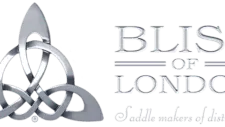Why do horses change shape?
Age, work, fitness, feed, season, and stress are key factors.
- Work. Schooling your horse is the same as going to the gym – you are training to change shape. They have musculature change due to strength built up. Even a visit by a therapist will change and relax the musculature. This is why you should have a saddle adjusted after a therapist visit, not before.
- They get fat, or thin. Weight gain is a normal part of the summer months for most horses, however, weight loss should be the aim in winter. Horses are designed to gain fat in the summer and then burn it off in the winter. They thrive on this seasonal weight fluctuation and it is good for their bodies to do this.
- Saddle changes cause changes. When you fit a new saddle, or have an old one adjusted, the horse is going to work differently. When it works differently it will build different muscles and relax others. The horse changes shape as a result. That is one reason why a saddle fitter should return after having provided a new saddle.
How often should I adjust my saddle?
It has been a common view that a yearly check was sufficient. In recent years there has been considerably more research into saddle fitting.
The general opinion seems to be that every 3 months is sensible for competition horses.
If your horse is developing and improving in their work, then you should check the saddle fit by using a saddle fitter more often. If the horse is not working hard or effectively then longer intervals between checks will be fine.
Use our online booking form to arrange your saddle check
I don’t want to spend money on Saddle checks
The knock-on effects of ignoring discomfort for the horse can cause lasting damage and can be expensive.
No one wants uncomfortable horses, not only for the horse’s sake but because they never work well when unhappy in their tack. The welfare and performance of the horse is the rider and owner’s responsibility.




